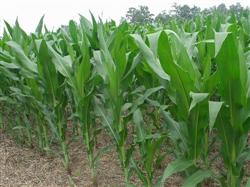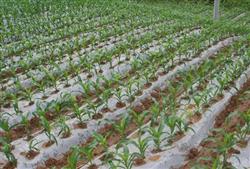Key points of Field Management of Spring Maize in the later stage

The application of panicle fertilizer is the most important topdressing in the growth of maize. When applied in the big trumpet stage of maize, some earlier plants can touch "smallpox". The time of applying panicle fertilizer can also be determined according to the number of days after sowing. Generally, spring sowing corn in open field applies panicle fertilizer 60 days after sowing (late-maturing varieties), 50 days (mid-maturing varieties) and 50 days (early-maturing varieties). Panicle fertilizer is mainly available nitrogen fertilizer, and the application rate is 50% of the total amount of nitrogen. Generally, 15 kg of urea is applied per mu, and if phosphorus and potassium fertilizer is not applied in base fertilizer and seedling fertilizer, 10 kg of phosphorus and potash fertilizer can be applied each. Ear fertilizer can be applied in trenches or holes between two rows of corn, and the soil can be covered immediately after application to prevent volatilization and loss of fertilizer. The fields with insufficient or uneven growth in the early stage should be applied early, and those with vigorous growth should be applied late. Clearing ditch soil combined with ear fertilizer to clear ditch soil and cultivate the soil at the base of corn is beneficial to improve the lodging resistance of maize, drought resistance and waterlogging resistance. When cultivating the soil, it should be noted that the clay loam soil should not be cultivated after the rain, because it will cause the soil to solidify and seal the air, and the soil air is insufficient, so it is necessary to cultivate the soil after the topsoil is dry. Dry land without irrigation should not cultivate soil, otherwise it will affect the growth of maize because of drought, especially in the later stage. Breaking off the fields with high fertility and low density of excess ears is easy to appear the phenomenon of multiple ears, especially fresh waxy corn and sweet corn, except for a few plants with good growth, they can leave 2 ears per plant, generally one ear per plant, in order to reduce nutrient consumption and improve the commodity rate of corn ears. However, it should be noted that when breaking off the surplus ear of corn, the leaves on the ear position should not be damaged or the loss will outweigh the gain. Individual fresh sweet corn varieties should also remove excess tillers to prevent nutrient consumption. Control of diseases and insect pests at the end of heart leaf is a suitable period to control corn borer. When the plant rate of flowers and leaves is more than 25%, it is better to apply pistil or granule to trumpet mouth, or BT powder 800-l000 double liquid spray can be used to control it. Corn leaf spot can be sprayed with 1000 times of 64% disinfectant alum wettable powder or 800 times of 80% Sanderson wettable powder at the initial stage of the disease, once every 7 times every 10 days, and can be sprayed twice. The harvest time of timely harvesting fresh corn can be controlled at 22ml 25 days after pollination and silking. The harvest and preservation period of sweet corn is short, so it is required to be sold, eaten and processed on the same day, and the quality will decline as long as the storage time is long. Common hybrid corn harvested with dried seeds is usually harvested 40 days after pollination.
- Prev

Matters needing attention in wheat planting
Matters needing attention in wheat planting
- Next

Key points of sowing and Seedling Protection techniques of Spring Maize
1. Fattening nursery bed: fertilizing bed is used to raise seedlings, rape seedbed is selected, and dry nursery pond is used as spring corn nursery bed. If the seedling bed is kept in proportion, the ratio of the seedling bed to the field area is 1: 20 when the bowl diameter is 5 cm, and the ratio of the seedling bed to the field area is 1: 10: 15 when the bowl diameter is more than 7 cm. Early in the morning.
Related
- The first cup of black tea in spring, the flavor and history of tea gardens in Kenya, Africa
- The computer can not only choose potatoes, but also grow tea rice. AI will grow winter oolong tea champion.
- It is not only the inflated tea bitten by insects, but also engraved with the four seasons tea in Beipu.
- The Oriental Beauty Tea Festival in Zhuxian County takes the stage at the weekend to experience the plus-size feast of oil tea.
- & quot; Oriental Beauty Tea & Exploration of Emei in Hsinchu, the hometown of quot;
- The new variety of strawberry "Tainong 1" dessert is the first choice with mellow aroma. Crimson gorgeous
- History of Tea in Taiwan: from Wild Inner Mountain to Export Tea Garden
- Two types of Taiwan Oriental Beauty Black Tea won the British three-Star Award for Childhood Tea Xiang Zhang Jiaqi changed from pilot to champion tea maker.
- Banana species and varieties: the planting history of Taiwan Xianren banana and dwarf banana is long, is banana disease resistant?
- Coffee planting Technology: Qianjie Coffee from Seedling to harvesting

